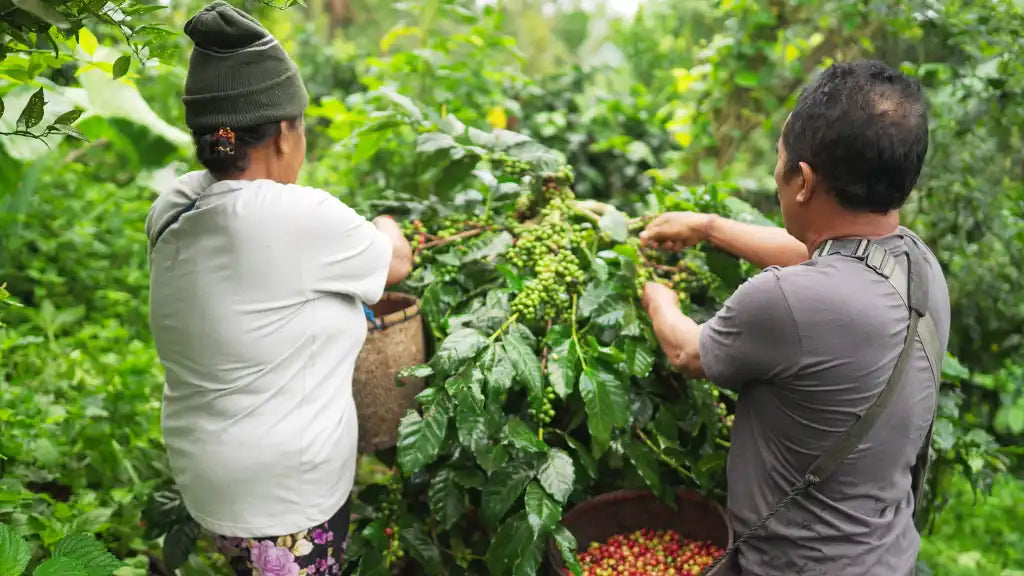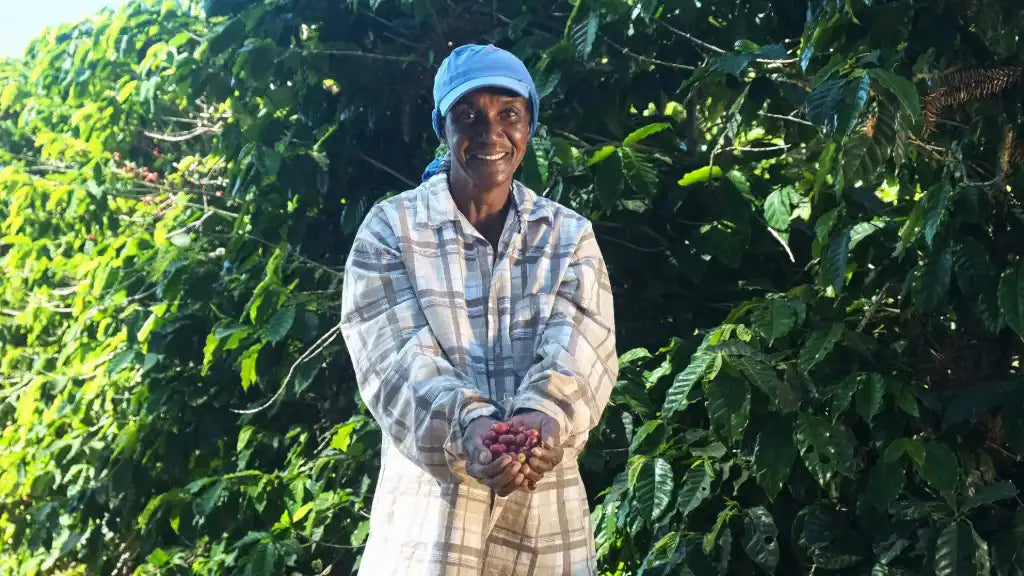
Tree planting improves biodiversity

Biodiversity is important to ecosystems. It maintains the balance and improves oxygen, soil health and water purity. Tree planting in coffee farms, also known as agroforestry, improves biodiversity. We encourage it.
Source Climate Change Coffee is grown in some of the most biodiverse regions of the world. Our Mexican coffee is grown near El Ocote Biosphere and our Ugandan coffee is grown around Mount Elgon, which is a UNESCO site for biodiversity. Preserving these forests is important.
Our coffee growers promote biodiversity in their coffee farms by growing a diverse range of trees and plants alongside their coffee. This creates a more complex and diverse ecosystem. It provides habitat for animals, birds and insects. Thus, it improves animal biodiversity at the same time as plant biodiversity.
The benefits of agroforestry
Agroforestry can encourage animals to safely cross from one area to another, becoming animal corridors in effect. It connects the coffee plantation to the landscape, becoming one with the local ecosystems.
By intercropping coffee with shade trees the coffee is protected from extreme heat, rain and wind. The roots of the shade trees help to prevent rain runoff, protecting the soil from erosion and reducing water stress. Fruit trees can provide shade and a harvest.
Agroforestry can help further by reducing reliance on synthetic inputs, e.g. chemical fertilisers and pesticides. It can also support an integrated pest management system as it prevents poisoning insects, birds and animals. It costs less and contributes to increased harvests, so it makes sense for the coffee grower.
By contrast, monoculture, or growing single crops on fields, reduces biodiversity. It degrades the soil over time which can affect crops. It removes the habitat for animals, birds and insects to live in. Only one plant type is grown, so there is no plant biodiversity. It’s the exact opposite of an agroforestry approach.
We support our coffee growers with education initiatives to teach them agroforestry. One example of this is Emiti Nibwo Bulora which means ‘Trees Sustain Life’. This initiative by Vi Agroforestry is run in Tanzania. The project plants only indigenous or naturalised species of trees.
The program funds the trees and the farmers also benefit from the timber and poles, firewood and charcoal, fruit and animal fodder. Some of the trees also improve soils through mulching leaves and are nitrogen fixing. This is where trees have a symbiotic relationship with bacteria. The bacteria convert atmospheric nitrogen into ammonia that can be used by plants. It enriches the soil.
Vi-Agroforestry has reached more than a million people in Africa with education and support. They teach agroforestry principles. These counteract the effects of deforestation and more widely climate change. Agroforestry improves the lives of the farmers and their incomes. At the same time, agroforestry improves biodiversity. And in this way, it reduces the negative effects of climate change.
So, tree planting not only improves biodiversity. It has the potential to counter the effects of climate change and deforestation. It also is of benefit to the farmer. They can use the timber and eat the fruits. They also see an improvement in their income through funded tree planting schemes. They can spend less on buying fertilisers and pesticides. And they reap the reward of increased harvests.








































